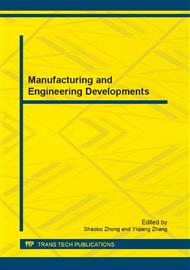p.327
p.332
p.338
p.343
p.350
p.355
p.360
p.365
p.371
Research on How to Send Ladder Derived by Linear Electric Motors
Abstract:
It is expected to raise the elevator at the same time more service efficiency, shorten the passenger ladder time and reasonable deployment of the purpose of the elevator. It puts forward a linear motor driven elevator car assigning algorithm. Combining with the characteristics of the linear motor, it use ALtera company's Cyclone Ⅱ series of EP2C5 chip, through the VHDL programming, has formulated the new structure of the elevator control strategy. This control strategy combining make good avoid mechanism, can realize the new elevator group control the lateral movement, and to better solve car collision between provides new way.
Info:
Periodical:
Pages:
350-354
Citation:
Online since:
January 2013
Authors:
Price:
Сopyright:
© 2013 Trans Tech Publications Ltd. All Rights Reserved
Share:
Citation:


